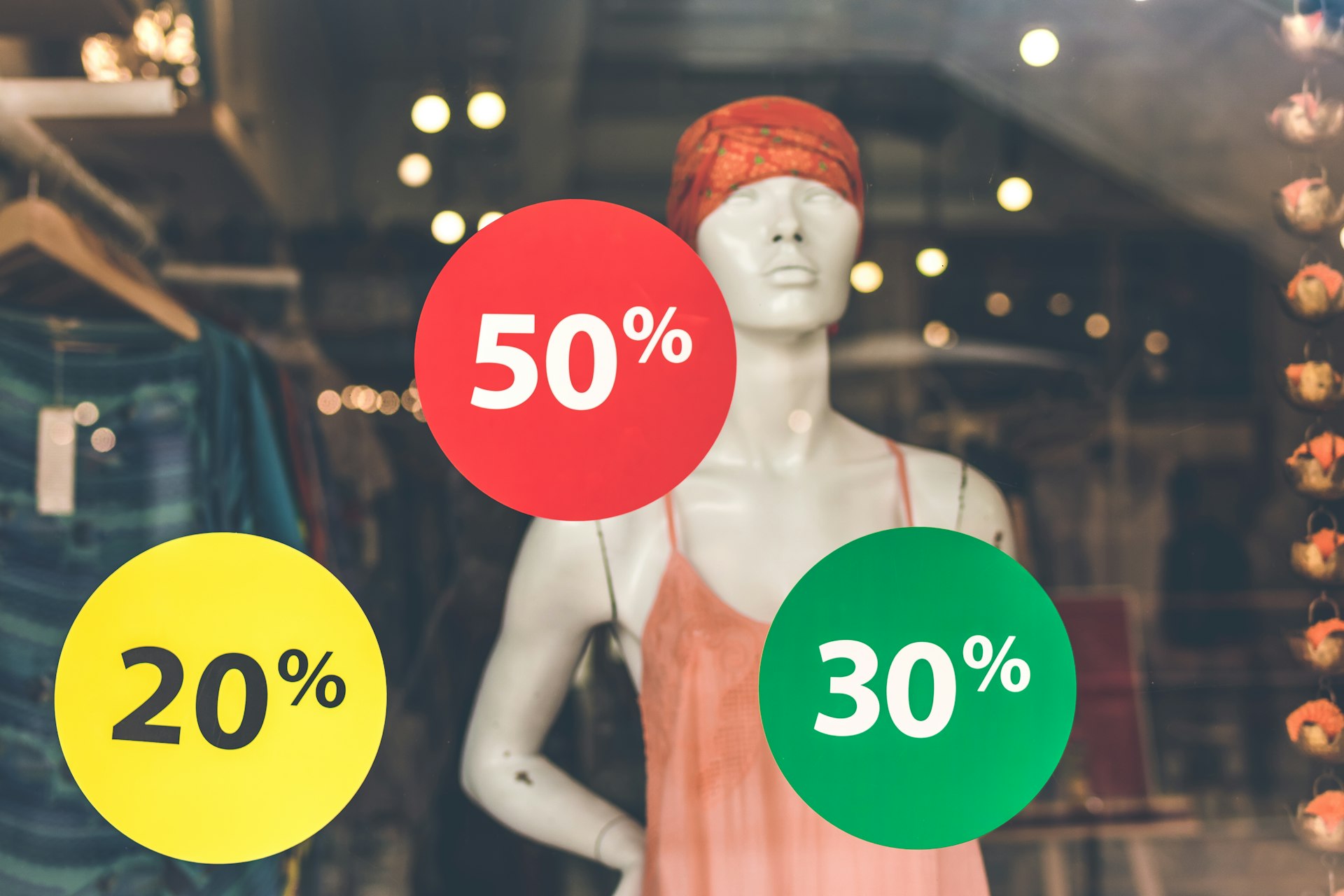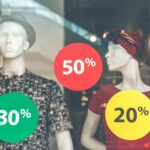How Sustainability is Reshaping Fashion Pricing: Trends, Challenges, and Opportunities


Photo by Artem Beliaikin on Unsplash
Understanding the Relationship Between Sustainability and Fashion Pricing
The fashion industry is undergoing a profound transformation as sustainability becomes a central concern for brands, retailers, and consumers. This shift not only influences how fashion is produced and marketed but also has a significant impact on pricing structures across the sector. By examining recent trends, challenges, and emerging opportunities, we can better understand the evolving landscape and what it means for both businesses and shoppers.
The Rise of Sustainable Fashion: What Does It Mean?
Sustainable fashion refers to clothing and accessories produced with minimal environmental and social harm. This approach prioritizes eco-friendly materials, ethical labor practices, waste reduction, and transparency throughout the supply chain. In 2024, the global sustainable fashion market was valued at $9.22 billion, with projections suggesting growth to $20.84 billion by 2033 [1] . This surge is driven largely by consumer demand for trustworthy brands and products that align with environmental and ethical values.
Key elements of sustainable fashion include:
- Use of organic, recycled, or innovative materials
- Reduction of textile waste and promotion of circular economy practices (like resale, rental, and repair)
- Ethical sourcing and fair labor standards
- Transparency in supply chains
How Sustainability Influences Fashion Pricing
Integrating sustainability into fashion production typically increases costs, at least in the short term. Eco-friendly materials, ethical labor, and traceability measures are more expensive than conventional practices. These costs are often reflected in higher retail prices for sustainably produced garments compared to fast fashion alternatives. However, the willingness of consumers to pay premium prices for sustainable products varies considerably, especially during periods of economic uncertainty [2] .
Price Premiums and Consumer Behavior
Many sustainable products carry a price premium-sometimes 20-30% higher than standard options-due to increased production costs. Yet, more than 75% of consumers are currently opting for lower-cost alternatives, as inflation and economic pressures persist [2] . This trend is particularly pronounced among younger generations, such as Gen Z and millennials, who express strong interest in sustainability but are often price-sensitive.
Despite these challenges, some consumers remain willing to pay more for eco-friendly products, especially when brands clearly communicate the benefits and value of their sustainability efforts [1] . Brands that differentiate themselves through transparency and innovation are better positioned to justify higher prices.
Industry Pressures and Shifting Priorities
Fashion brands are facing complex decisions as they balance sustainability with profitability. According to McKinsey’s 2025 State of Fashion report, only 18% of business leaders identified sustainability as a top risk for growth in the coming year-a significant drop from previous years [3] . Economic headwinds, weak sales, and competition from low-cost knockoffs are pushing some brands to deprioritize sustainability initiatives in favor of cost-cutting [4] .
This trend has real consequences for pricing. As brands scale back on sustainability investments, some may be able to offer lower prices, but at the risk of losing environmentally conscious consumers. Others, committed to sustainable practices, may face higher production costs and narrower margins.
Case Studies: Pricing Strategies in Sustainable Fashion
Leading sustainable brands are experimenting with a variety of pricing strategies:
- Resale and Secondhand Markets: Brands like Patagonia and The RealReal have embraced resale and trade-in programs, allowing consumers to purchase high-quality items at lower prices while promoting circularity [1] . This approach can flatten price premiums and make sustainable fashion more accessible.
- Rental and Subscription Models: Services such as Rent the Runway offer consumers access to premium sustainable fashion at a fraction of the purchase price, reducing overall consumption and waste.
- Slow Fashion and Limited Production: Brands focusing on slow fashion-creating fewer, higher-quality items-can command higher prices by emphasizing durability and ethical production. These businesses typically target consumers willing to invest in longevity and craftsmanship.
Each of these models addresses the sustainability-cost dilemma in different ways, helping brands reach a broader market or justify higher prices with added value.
How Consumers Can Access Sustainable Fashion Without Breaking the Bank
While sustainable fashion often comes with higher price tags, there are practical strategies consumers can use to shop sustainably without overspending:
- Explore secondhand and thrift stores, both in-person and online, for quality pre-owned items at reduced prices.
- Participate in clothing swaps or community exchanges to refresh your wardrobe sustainably and affordably.
- Take advantage of rental services for special occasions rather than buying new, single-use garments.
- Look for brands with transparent pricing breakdowns and ethical certifications, which can help ensure value for money.
- Consider investing in a few durable, versatile pieces that will last longer, reducing the need for frequent replacements.
To identify reputable sustainable brands, you can search for recognized certifications such as GOTS (Global Organic Textile Standard), Fair Trade, or Bluesign. Visiting official brand websites and reading third-party reviews can also provide valuable insights into sustainability claims.
Challenges and Solutions for Fashion Brands
Brands aiming to integrate sustainability into their business models must overcome several obstacles:
- Rising Production Costs: Sustainable materials and ethical labor are inherently more expensive. Brands can mitigate these costs through bulk purchasing, supply chain partnerships, and process innovation.
- Consumer Price Sensitivity: Many shoppers are unwilling or unable to pay higher prices. Offering a range of price points and emphasizing the long-term value of sustainable fashion can help bridge the gap.
- Regulatory Compliance: Increasing regulations around sustainability require investment in tracking, reporting, and compliance. Staying informed about local and international standards is essential; consider consulting the official websites of organizations like the U.S. Environmental Protection Agency for guidance on environmental regulations.
- Communication and Transparency: Clear messaging about the real costs and benefits of sustainable fashion helps build consumer trust. Brands should provide detailed product information and third-party certification wherever possible.
Fashion businesses can also benefit from joining industry groups or sustainability initiatives, which offer resources, networking, and guidance on best practices. To find such organizations, search for terms like “fashion sustainability consortium” or “ethical fashion alliance” alongside your region or product focus.

Photo by Elimende Inagella on Unsplash
Alternative Approaches: Making Sustainability Affordable
Some brands are adopting innovative approaches to reduce costs and make sustainability more accessible:
- Implementing circular economy principles, such as designing for recyclability or upcycling waste materials
- Leveraging technology to optimize inventory and reduce overproduction
- Partnering with other brands to share resources and reduce costs
- Pursuing government grants or incentives for sustainable business practices-these may be available through local economic development agencies or environmental departments (search for “sustainable fashion grants” and your state or country)
By continuously innovating, brands can lower the cost barrier and offer a wider range of sustainable products at more competitive prices.
Key Takeaways and Next Steps
Sustainability is reshaping the fashion industry’s pricing landscape. While eco-friendly practices often lead to higher costs, evolving consumer preferences, regulatory pressures, and market innovations are steadily changing how brands approach pricing and value. For consumers, a growing array of options-including secondhand, rental, and thoughtfully produced goods-makes sustainable fashion more attainable than ever. For brands, success means balancing cost, transparency, and continued investment in greener practices, even in challenging economic times.
If you are a business owner or industry professional looking to integrate sustainability into your pricing strategy, consider joining trade organizations, consulting with sustainability experts, and keeping up with regulatory developments through government agency websites. For shoppers, staying informed and seeking out transparent, ethical brands will help you make choices that align with your values and budget.
References
- [1] Lightspeed (2024). 5 Sustainable Fashion Trends Every Retailer Should Watch.
- [2] Firework (2025). Fashion Industry Trends 2025: Navigating Sustainability and Tech Innovations.
- [3] Trellis (2025). Sustainability plummets as priority in 2025 for fashion brands.
- [4] Apparel Impact (2025). Sustainability is no longer in fashion, but the apparel industry’s future depends on it.






